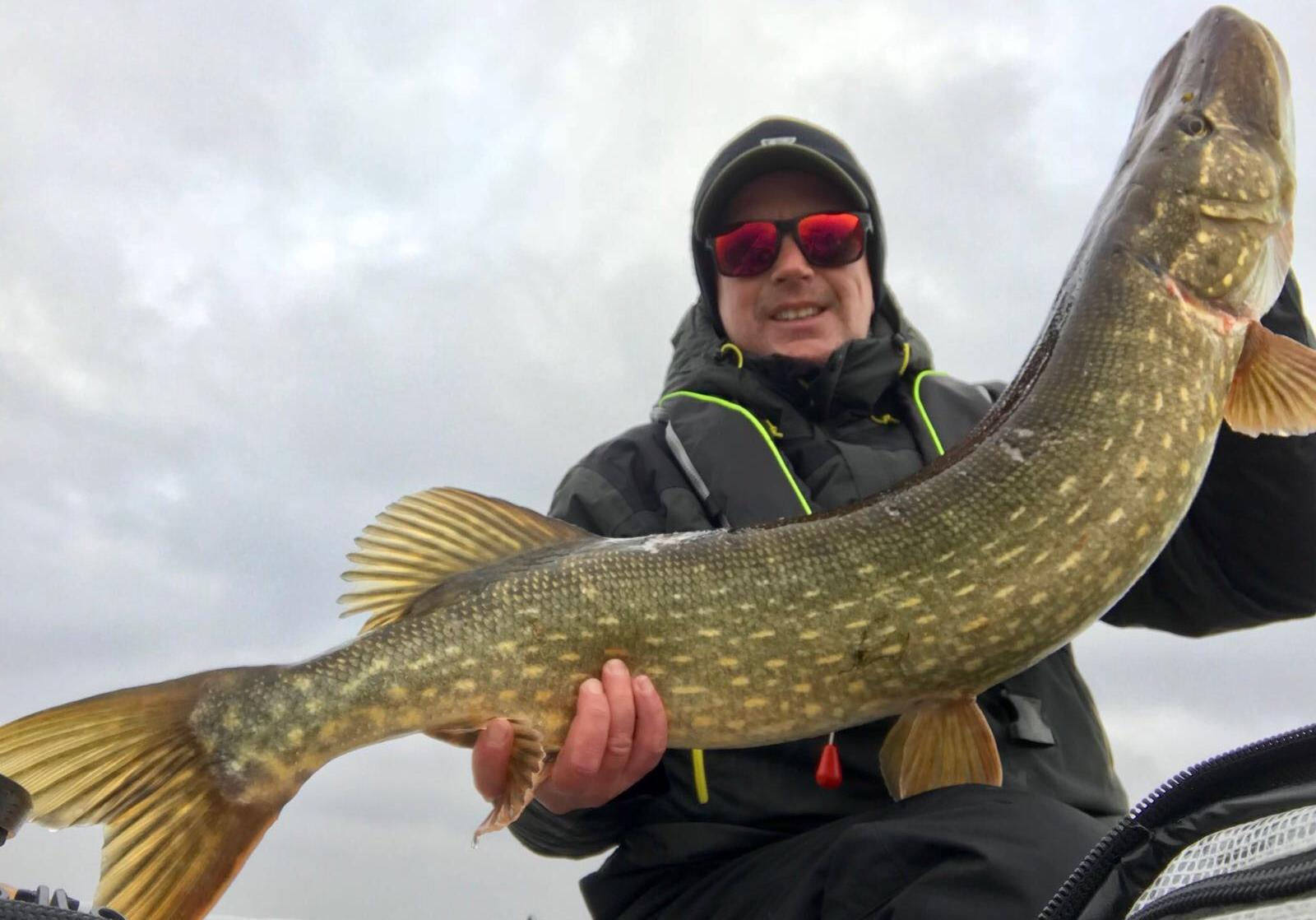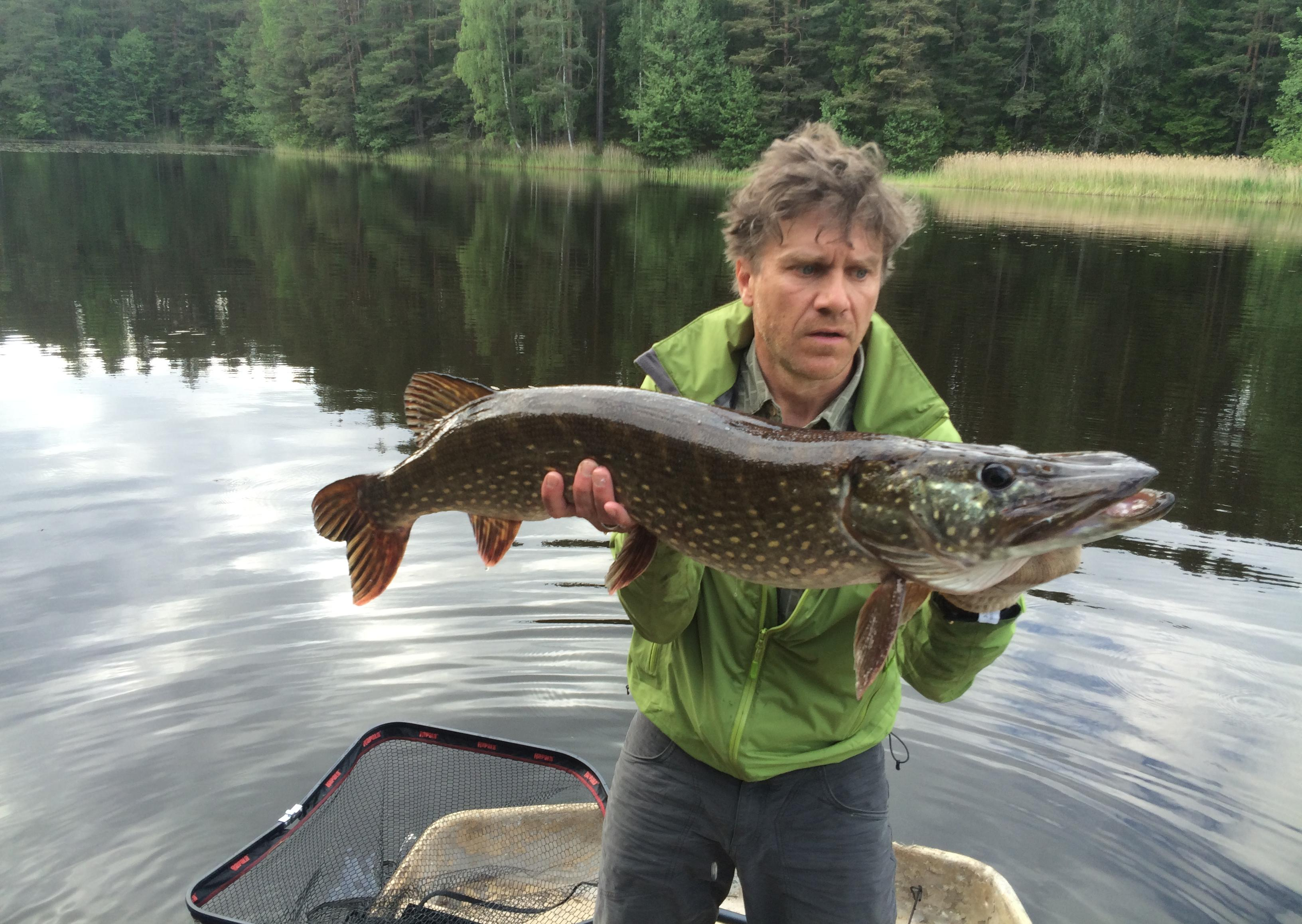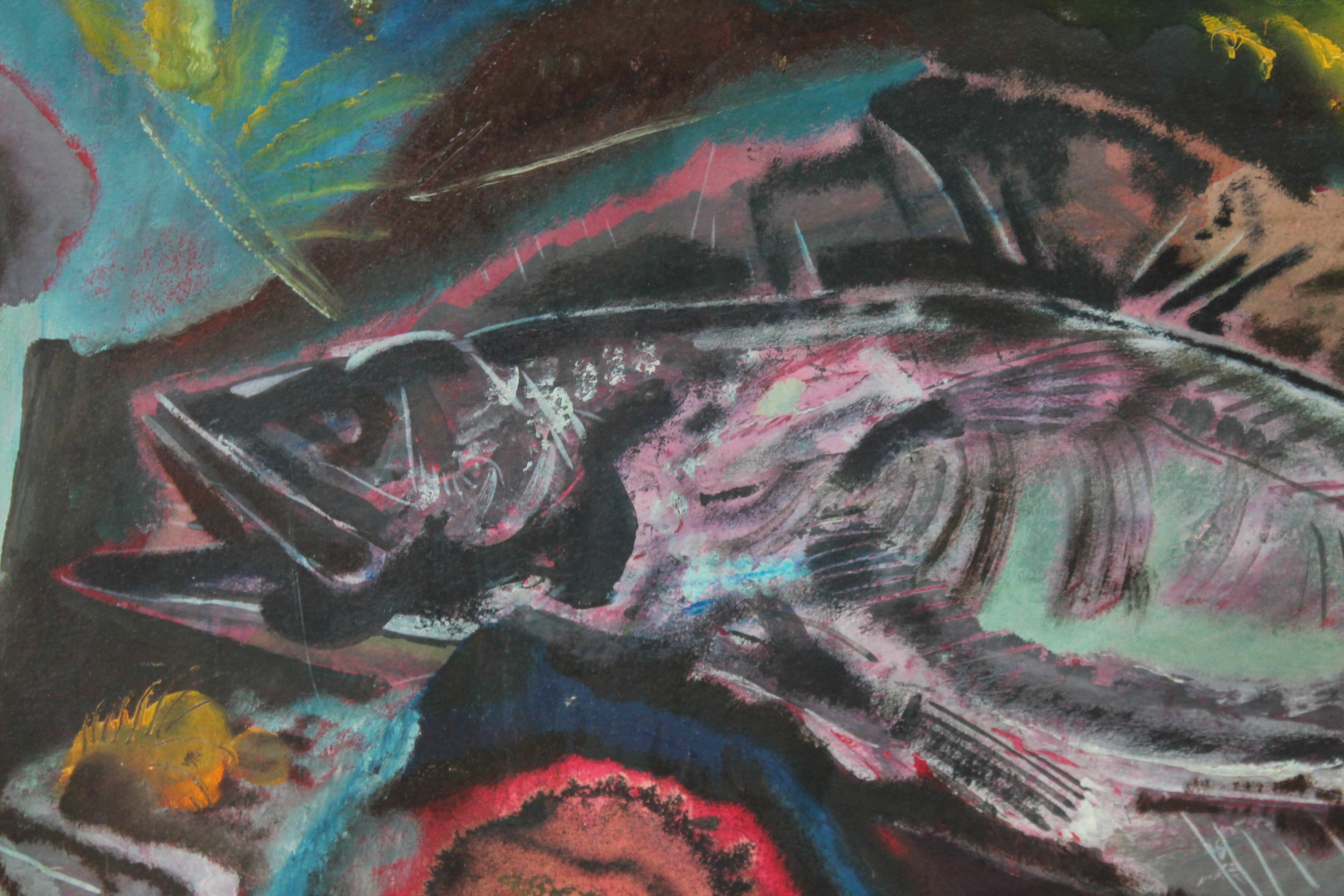
Nowadays many people have hobbies and fated interests, but spending pastime in nature, also next to waters, is one of the most popular ones. The wide range of fishermen family can be divided into different types basing on the aim species, techniques, waters, proficiency, season and other parameters. The latest or the refreshed profile and type of angler, which brings more followers to the nature friendly angling community – trophy pike angling.
When analysing the “Release the Mother!” table of results, it is clear that the more than one third of a century old largest pike record of Latvia might be beaten. The contest “Release the Mother!” organised by JSC “Latvijas valsts meži” also “plays the card of vanity and excitement” – to beat competitors with the lengths of caught and released fish, because the photo contest basically is a competition after all. In both cases also a mechanism of data collection.
What can be said about the current procedure for submitting trophy fish records by experts of different angling technique and species and influencers?
Normunds Ikomass. Big-bait angling instructor “Pike in LV”:
- What does a record – personal, national, global of your favourite fish – means to you?
Each successive record of mine – is the question of invested time and finances, with every beaten record comes an unprecedented knowledge, analysed nuances. Persistence brings results, surely, also records. I'm not even close to my personal record. When I catch a larger fish, I will dream of an even larger one – without limits. A new national record – I have that aim. I think that you have to have an aim, or you might lose keenness, but without concentration it is not possible. To beat the world record, which is around 30 kg, now seems unreal, but somewhere in the waters there is such or even larger one. The more men will release especially the large pikes with good genetics, the more it will allow them to grow into the aimed giants.
- How would you estimate your chances to beat personal, national, global record in the competition for carnivorous fish?
Personal, I think, without any problems, maybe even this autumn. I work every day to beat the Latvian record, both practically and theoretically – read informative literature, media, I also value conversation with experienced anglers. I have a feeling that something will happen in near future, next year’s global aim – to win the “Predator Tour 2020”.
- What is your best result – personal record for any fish?
I used to count pikes that were from one metre and longer, they were more than hundred, but now I don’t count them anymore. I know my three largest “mothers”: 119 cm and 11.5 kg, 120 cm and 11 kg, 123 cm and 11.5 kg. Lately I have been counting trophies that are 10 kilograms and heavier.
- What do you think about the procedure for submitting a record in Latvia (other countries)? What would you offer to change?
To be honest, I have no idea what is the procedure. I only know what actions I would take: boat has a large tank with aerator. I would take fish to the shore, where I would put her in a landing net – would use the largest one. Then I would call to organisations responsible to come and to register. I would prefer that dead fish would not be allowed to be registered as a record.

Mārtiņš Plešs. Instructor of fly fishing, member of Latvian national team:
The only record important to me is the personal record, because it is like a standard to measure your own success. Other records always have been insignificant.
It is possible to beat personal and national records every year. You just have to prepare properly. It is rather difficult to compete with global records for us, because our waters have a very small number of fish of that size.
My personal record is a salmon, which was 115 cm long. I can only guess the weight, because fish was released. The condition of fish was perfect and weight might have been above 15 kg, beating the current national record.
If we talk about the current procedure for submitting a record, then I must say that it is not a good one, because many practice “catch and release” method and don’t intend to kill a beautiful, large fish only for an entry of weight in a table. I am one of those people. With current procedure we (Latvia) will never be able to compete with other countries, because we kill the large specimens that we already have only few left. A more humane procedure for submitting a record has to be introduced. It would completely be enough to measure the length and girth of fish with measuring tape, and to take photos of it. There are many calculators available that can calculate the weight of a fish by these measurements. If it is not possible to step back from the “old” procedure, then I would advise to create a separate register, which would definitely improve the current situation.
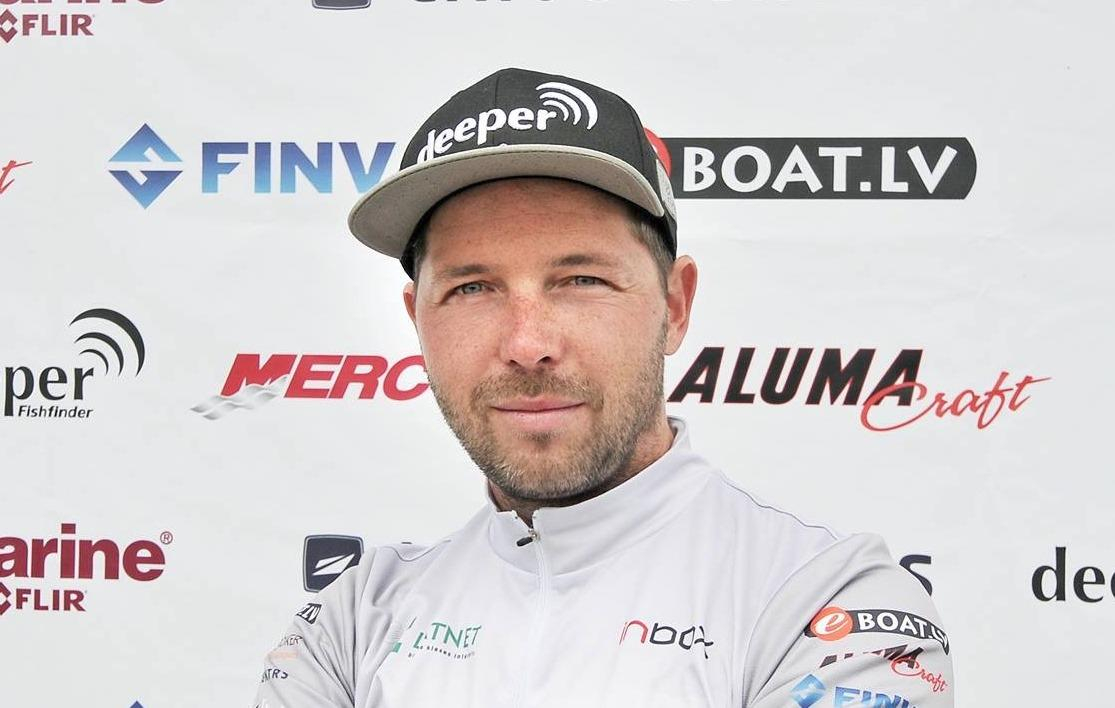
Armands Ērglis. Sports spin fishing enthusiast, creator of “Copes garša” (Taste of angling):
It is always interesting to study record tables, it gives you reference point to aim for. If the aim is to beat records – it helps understanding “how fish hooked before”. Latvian records, surely are interesting and can be beaten for many fish, which also happens from time to time, but there are species, that, to my mind, cannot be beaten in a closest future, however, if the practice of releasing trophy fish would improve, then in the future we still can beat national records. Of course, the most interesting thing is to beat your own record numbers. For me they improve almost every year, but I mainly measure the length of fish, because it is less traumatising and weights are not always at hand. This year, in one week, when practising for competition of Latvian Championship, I beat 3 length records of caught and release fish in Latvia with a spinning rod. For zander, perch, catfish. I have to say, that fish that have been caught on live bait or by trolling, to my mind, cannot be put in the same category with the fish caught by spinning rod, because we speak of the carnivorous fish.
Even though in our latitude fish are growing the fastest, on a global level it will be difficult for local fish to compete with such countries as Austria, Germany or Sweden, where trophies almost never are taken out of the water. It is possible to beat Latvian records. I, personally, have one specific species in mind, whose national record has real chances to be beaten and I think that my chances to do it in the nearest 5 years are pretty high.
Up until now my largest fish – pike 10.6 kg (Daugava, Koknese), zander 82 cm, perch 46 cm and 1.6 kg (UK), perch 44 cm (Daugava), perch 43 cm and 1.2 kg (Burtnieks), catfish 118 cm (Daugava), roach 1.2 kg (Daugava, on spinning rod), sabrefish (Lake Nabe, on earthworm), Baltic cod 5.2 kg (Baltic sea).
Now, to register a fish for Latvian record, fish has to be killed. It has to be thought how in our modern times it could be done more gentle and operatively. It is very possible, that if I caught a national record size specimen, I would measure and weight it on my own, but would release the fish. Even though it means that there would be no official record. But personal record will always be the dearest one! Good luck!
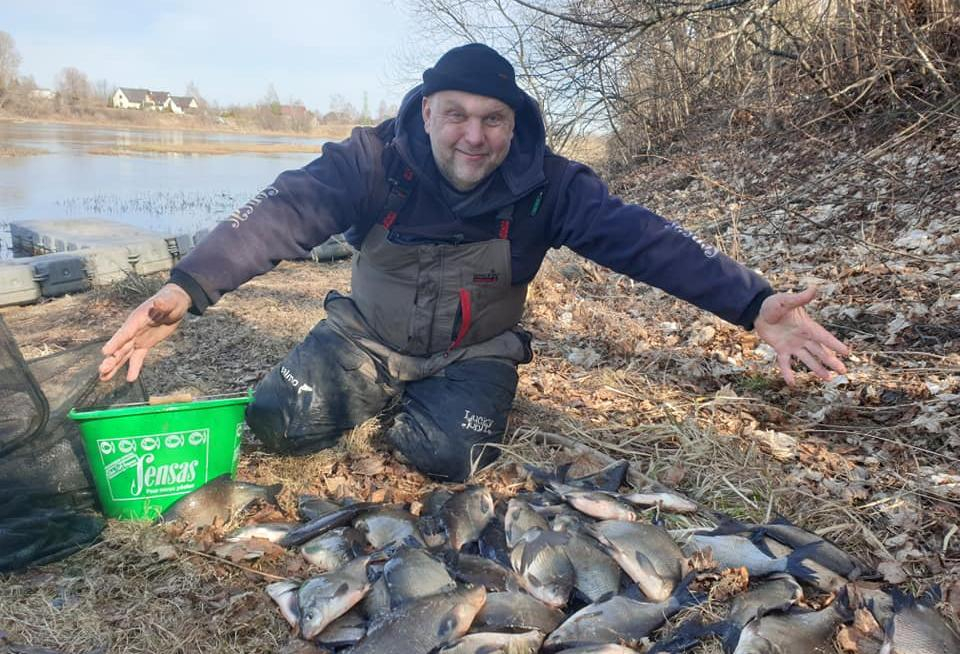
Normunds Grabovskis. Sports angler, creator of “Makšķerēšanas noslēpumi” (Fishing secrets):
As the object of fishing, the big fish doesn’t interest me at all, I need a lot of angling! The best thing in the angling is the process itself, and I would rather catch 100 fish each weighing a kilogram, not one fish weighing 100 kg.
I participate in competitions for the process, not because of the result. My catches that I can be proud of are only: catfish 30 kg, bream 3.5 kg, roach 1.3 kg and perch 1.5 kg. However, there have been such angling sessions, when I catch breams weighing 100 kg in total, and vimba breams are more than 200 specimen.
In other countries records are not registered, but we can and we should express our gratitude to J.Stikuts, that he has stirred the theme of record registration for many years, even though, many fish, if not all of them, in reality the largest caught specimens might be even larger. Because poachers catch large fish, those are bream 8 kg+, salmon 40+, tench 5+ kg... Unfortunately, I am slowly stepping away from this theme, also from the sport: by dedicating a lot of time to fishing and sport, unfortunately, you can spend less time with the family.
Māris Olte. Sports spin fishing enthusiast, creator of “Makšķerē ar Olti” (Fish with Olte):
For me record is a point of reference. Weight, length – something that materialises a great catch.
Is it possible to beat the record in the competition for carnivorous fish? For pike – I don’t think that it’s possible to beat it, because it is a lot of pressure for the local waters. For zander – a lot of time should pass to grow up such giants, however, number of zander increases. Perch – it is possible, I have immersed in this topic for already six years.
My personal records: pike around 10 kg, zander 3.5 kg, perch 1.5 kg. That means that pike is 50% out of the record, zander 25%, perch 75% out of the record.
The current procedure for submitting a record does not imply respect towards the fish and the angler. Only dry stated facts. There must be a chance to release the record fish, for it to continue to grow, but register it as an official record, so that the tale about the “even larger one” would continue in greater quality.
The 4th season of competition “Release the Mother!” will continue until November 30, all anglers can participate in it in the collaboration lakes of the project. The “Release the Mother!” season of year 2019 is supported by the best lure, equipment, fishing and hunting clothing, electronics sellers – FishBon, Eholotes, SIA Ieroči and Golteenn.
